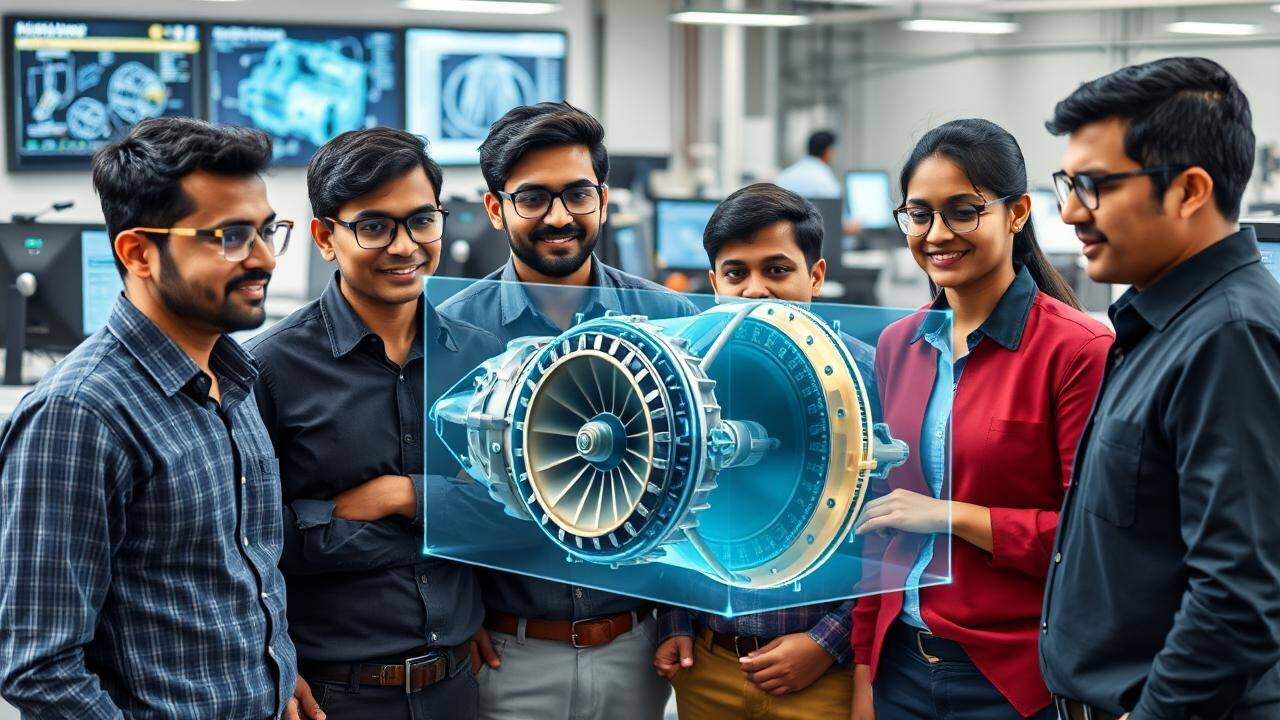Prime Minister Modi, marking Independence Day, urged India’s talent to design and build jet engines for indigenous fighter aircraft, crucial for defence self-reliance under the Aatmanirbhar Bharat vision. This push comes amid delays in foreign engine deliveries, prompting India to seek co-development partnerships with Rolls-Royce, Safran, and a Japanese manufacturer.
Powering the Future: India’s Ambitious Push for Indigenous Fighter Jet Engines
For decades, India’s defense sector has relied heavily on foreign imports, a situation that Prime Minister Modi is determined to change. The call for Atmanirbhar Bharat – a self-reliant India – has resonated across various industries, and now, the focus is squarely on a critical component of national security: fighter jet engines. The message is clear: India wants to design and manufacture its own engines, a move that could revolutionize its defense capabilities and geopolitical standing.
This isn’t just about assembling parts within India; it’s about mastering the complex technology, developing indigenous expertise, and breaking free from dependence on foreign suppliers. Think about it: a nation that can build its own fighter jet engines controls its own destiny in the skies. It dictates its own timelines, tailors the technology to its specific needs, and secures its defense supply chain against external pressures.
Why Fighter Jet Engines? The Strategic Imperative
The strategic implications of this push are immense. Currently, India imports almost all of its fighter jet engines. This reliance creates vulnerabilities. Spare parts, maintenance, and upgrades are all subject to the policies and priorities of the exporting nations. Building domestic capabilities in fighter jet engine manufacturing would significantly mitigate these risks. It would also create a ripple effect, fostering innovation, driving research and development, and creating high-skilled jobs across the aerospace engineering sector.

Imagine a scenario where India can not only produce its own fighter jets but also offer competitive engine technology to other nations. This would transform India from a major arms importer into a potential exporter, strengthening its economy and enhancing its influence on the global stage. It also opens the door for collaborative projects with other like-minded countries seeking to diversify their defense supply chains.
Challenges and Opportunities on the Horizon
Of course, achieving self-reliance in fighter jet engine technology is a monumental undertaking. It requires significant investment in research and development, a highly skilled workforce, and seamless collaboration between government agencies, private companies, and academic institutions. The technology involved is incredibly complex, requiring expertise in areas like advanced materials, aerodynamics, and combustion.
However, these challenges also present enormous opportunities. The initiative can be a catalyst for technological innovation, driving advancements in areas that have applications far beyond the defense sector. It can also create a vibrant ecosystem of startups and small businesses specializing in aerospace technologies, fostering a culture of entrepreneurship and innovation.
Furthermore, India can leverage its existing strengths in areas like software engineering and manufacturing to accelerate the development of indigenous fighter jet engine technology. By combining its proven capabilities with a focused investment in research and development, India can overcome the technological hurdles and achieve its goal of self-reliance. This initiative ties directly into India’s broader ambitions to become a global manufacturing hub, outlined in earlier “Make in India” programs that sought to boost industrial production across various sectors. [Read more about “Make in India” here.](internal-link)
A Long-Term Vision for Aerospace Dominance
The pursuit of indigenous fighter jet engine technology is not a short-term project; it’s a long-term vision for aerospace dominance. It requires sustained commitment, strategic planning, and a willingness to embrace risk. But the potential rewards – enhanced national security, technological innovation, and economic growth – are well worth the investment. The journey may be challenging, but the destination is a self-reliant and powerful India, capable of defending its interests and contributing to global peace and stability. By fostering a vibrant ecosystem of innovation and collaboration, India is poised to take flight in the world of aerospace engineering.
This ambitious undertaking will ultimately reshape the landscape of India’s defense industry and solidify its position as a major player in the global aerospace market. The push for made in India fighter jet engines signals a bold step toward a future where India controls its own technological destiny.







